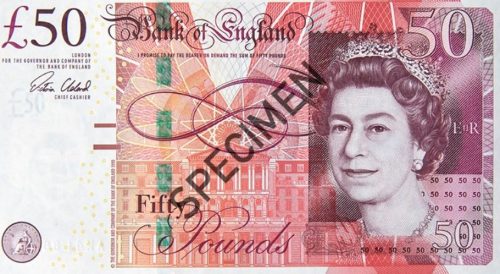The Bank of England says that it plans to issue a new polymer £50 note. The BoE says that it will announce a character selection for the new polymer note in due course.
It will seek nominations from members of the public for the potential characters to appear on the new £50 note.
£50 note to follow £20 note
After having moved successfully to polymer with the five and ten-pound notes, the new Turner twenty pound note will go into circulation in 2020. The new £50 note will follow the new £20 note.
The Bank of England’s Chief Cashier, Sarah John, said:
“I’m very excited to be starting the process of introducing a new £50 note. At the Bank, we are committed to providing the public with high-quality notes they can use with confidence.”
“Moving the £50 note onto polymer is an important next step to ensure that we can continue to do that.”
Polymer notes – advantages
Polymer notes are stronger, safer, and cleaner, says The UK’s central bank. They are also harder to counterfeit.
They last about two-and-a-half times longer than the traditional paper notes. Therefore, they are more environmentally friendly.

The Bank of England introduced the last crop of £50 notes in 2011. The note’s future, however, was uncertain. There was concern that people were using them to launder money and evade taxes. Tax evasion, unlike tax avoidance, is illegal.
In May 2016, the European Central Bank said it would phase out the €500 note. Some people nicknamed it the ‘Bin Laden,’ because of its association with the funding of terrorism.
According to the Treasury, there are 330 million £50 notes in circulation. They have a combined value of £16.5 billion ($21.7 billion).
Note vs. bill
When talking about paper money, Britons say ‘notes’ while Americans say ‘bill.’ Therefore, $20 is a twenty-dollar bill, while £20 is a twenty-pound note.

